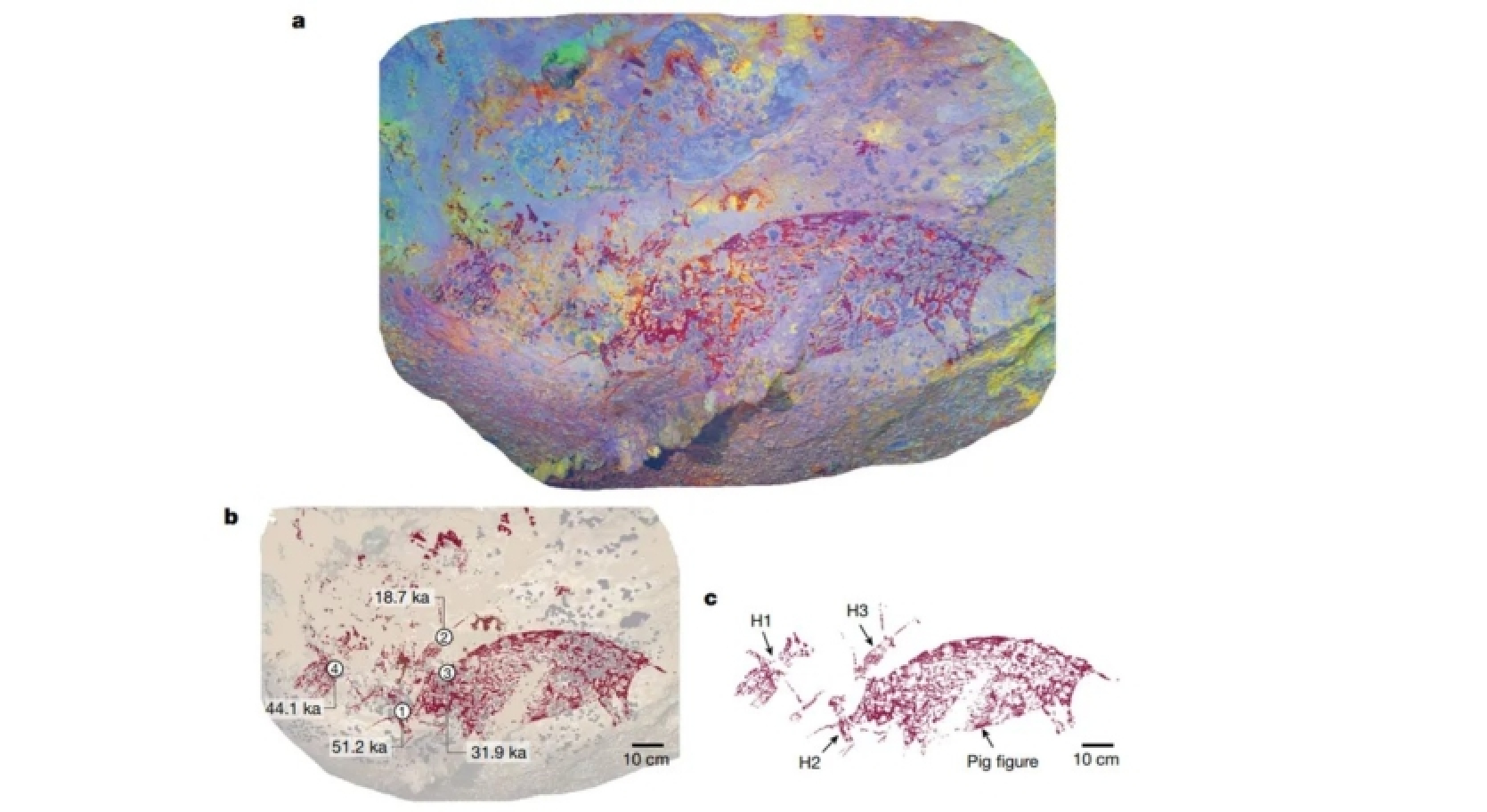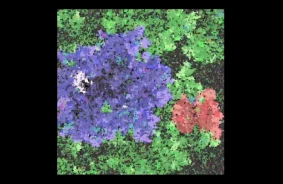Among the vast rocky walls of the Indonesian island, archaeologists have discovered the oldest known example of art depicting a story.
The rock painting is one of many found near the lowland karst landscape of South Sulawesi. The drawing depicts three human-like figures interacting with a pig. Researchers describe it as a "mysterious scene" that may represent a "hunting story."
"The artist took care to arrange these four individual figure forms in spatial proximity to one another and to depict their interaction in a way that the observer could imagine actions taking place between the figures. The result is a composed scene that conveys a story," said Adam Brumm, author of the study and professor of archaeology at Griffith University in Brisbane.
Using a new age determination technique, the research group concluded that the pigment was carefully applied to the rock wall at least 51,200 years ago. Thus, this drawing is now considered the oldest representative of narrative art. It's also a new record holder as the oldest known piece of figurative cave art. Narrative compositions generally began to spread in the world around 14-11 thousand years ago. At least that's how it was previously believed.
More than 35 thousand years ago, most works of art were limited to abstract forms without reference to the visible world. Several scenes of rock art from this period can be considered figurative, meaning they depict recognizable figures and objects from physical reality, such as people and other animals. However, they are extremely rare. However, they can be found in abundance on the island of Sulawesi.
The emergence of narrative art illuminates an important milestone in human history. As our societies and communities became more complex, our works of art also became more complex — starting from abstract forms and swirls, which evolved into representational images that not only reflected reality but also contained profound meaning.
"Sulawesi art is now the oldest known evidence of this key development in art history, but it probably had its origins somewhere in Africa, where our species evolved," noted Adam Brumm.
He added that people must have used similar forms of image creation in other parts of the world at an equivalent period of time and even earlier. But evidence of this either has not survived or has not yet been discovered.
Source: iflscience














Comments (0)
There are no comments for now